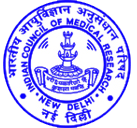Malaria is an mosquito borne disease caused by protozoan parasites from the Plasmodium family that can be transmitted by the bite of the female Anopheles mosquito. Two common types of malaria are vivax malaria and Falciparum malaria, among which Falciparum malaria is the more deadly type. The symptoms of malaria include cycles of chills, fever, sweats, muscle aches and headache that recur every few days. There can also be vomiting, diarrhea. Falciparum malaria may cause yellowing (jaundice) of the skin and eyes, bleeding problems, shock, kidney and liver failure, central nervous system problems (cerebral malaria) leading to coma and death. Malaria transmission occurs primarily between dusk and dawn because of the nocturnal feeding habits of female Anopheles mosquitoes. One should therefore take protective measures to reduce contact with mosquitoes, especially during these hours. These measures include remaining in well-screened areas, using mosquito nets and repellants, wearing clothes that cover most of the body. Travelers to areas with malaria are advised to take prophylactic medications to prevent infections.


NUTRITION ATLAS
ICMR-National Institute of Nutrition
Hyderabad,Telangana,India.